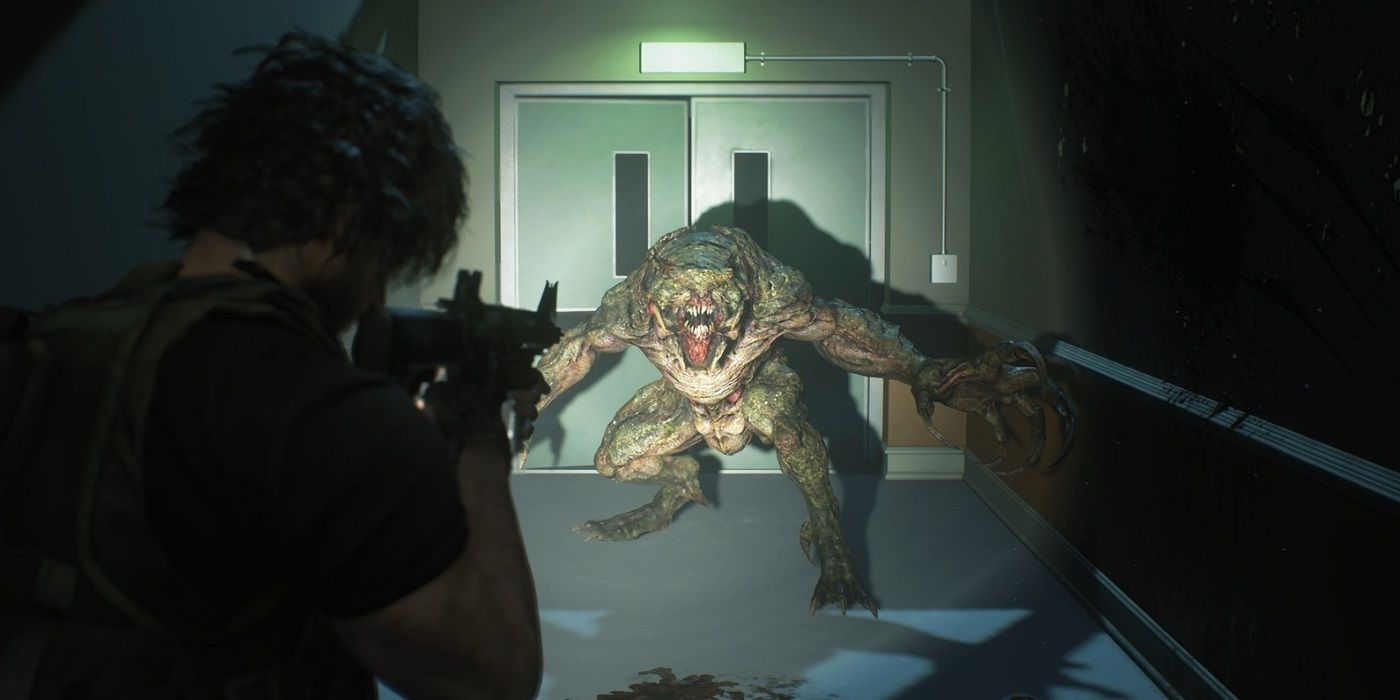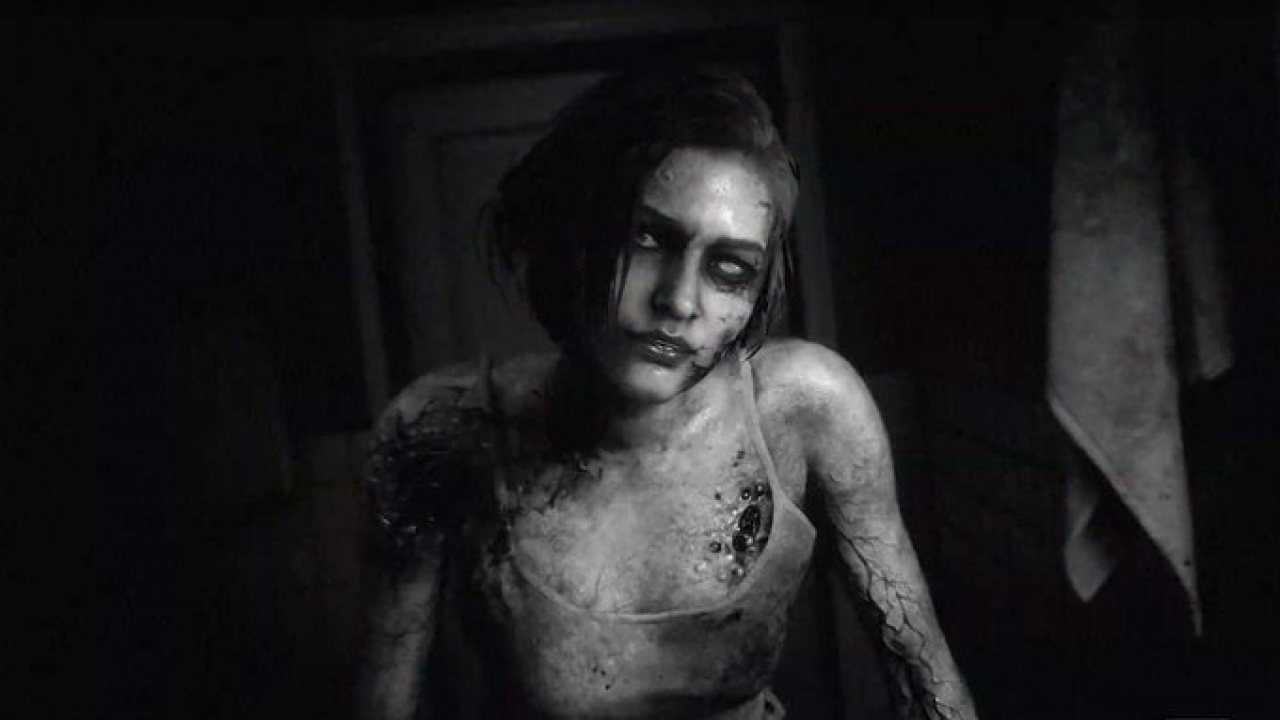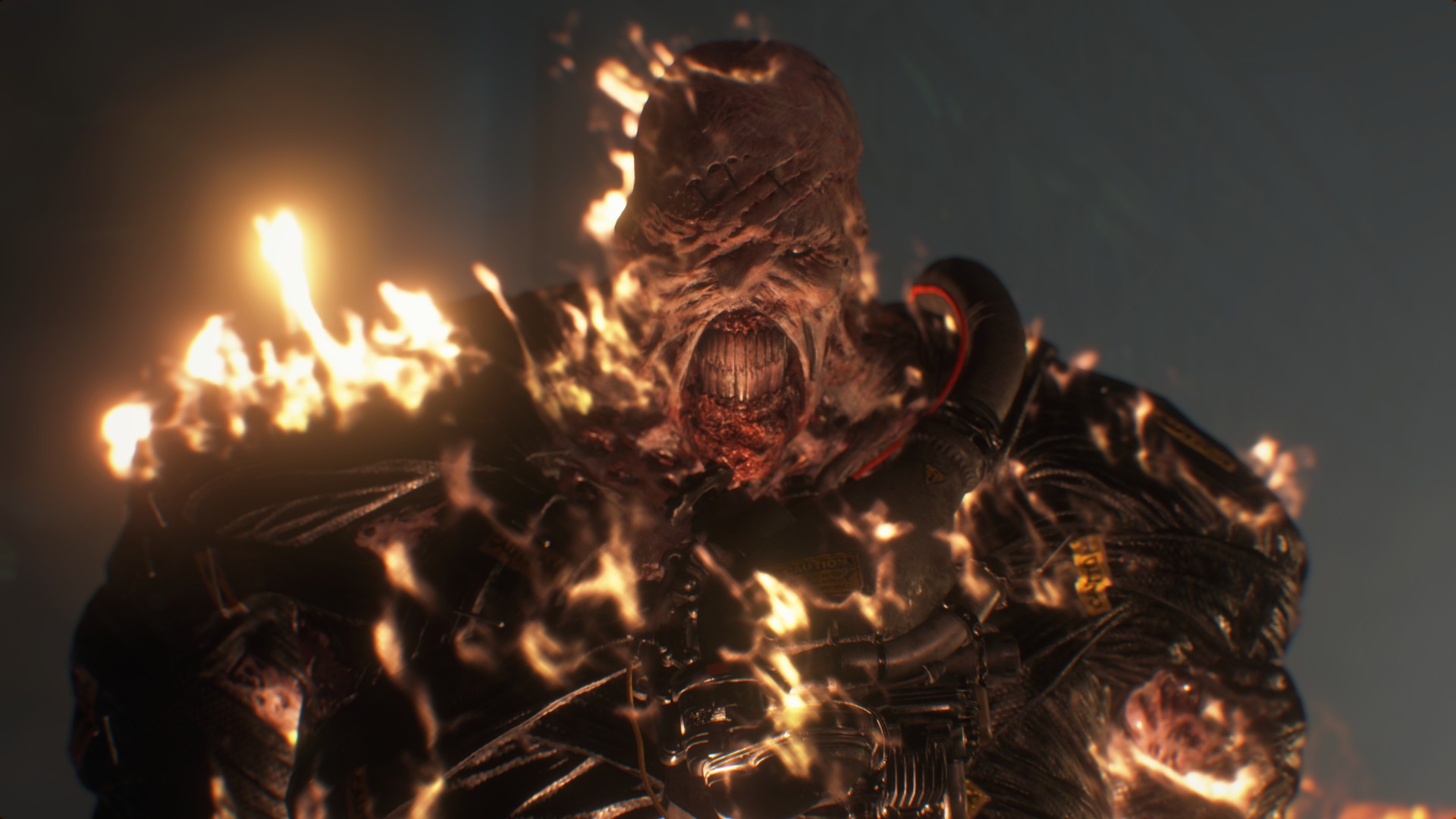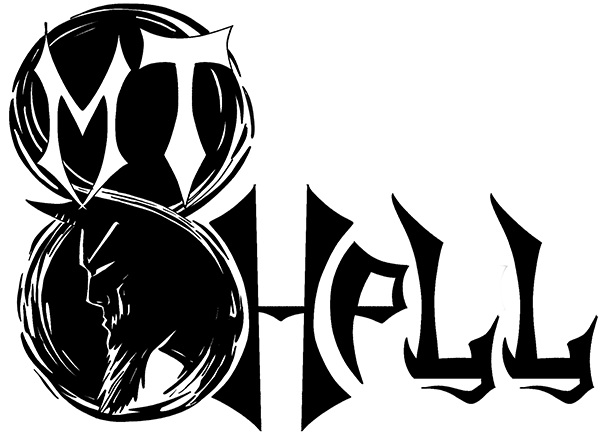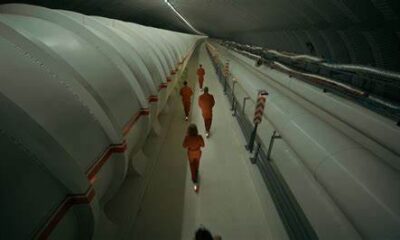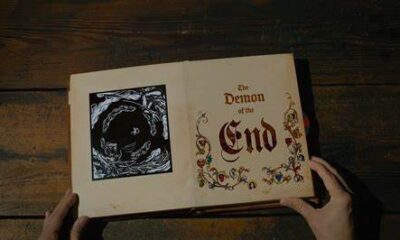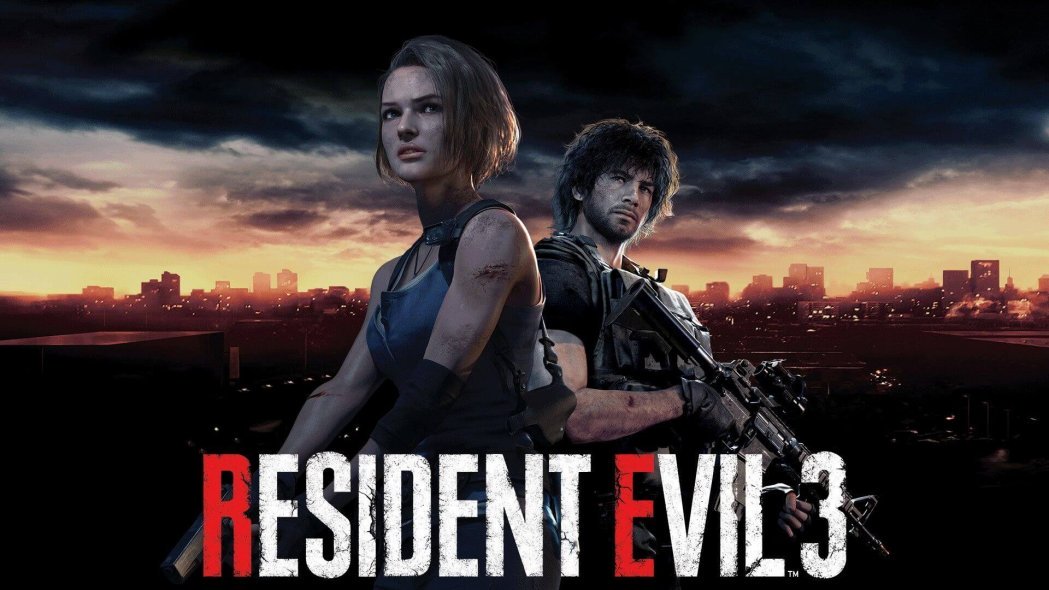
Resident Evil 3 (2020) • Nemesis Doesn’t Get the Stars He Was After
Alright, strap in. Boy, do I have some words. It is well known that I am the biggest fanboy of the series, and that I am deeply familiar with the series origins, its values, evolution, lore, you name it. Not only was I blown away by the heights of the recent Resident Evil 2 remake, but I was floored by the announcement that its sequel, Resident Evil 3, had been in development for even longer than 2 and that it would be releasing a mere year later using the same game engine. While it might have been my fault to hold such high expectation after the success of 2, and the promising trailers of 3, I came out of my run with Jill and Nemesis sorely disappointed.
Jill’s face no longer looks like a sandwich
Personally, I love PS1 graphics. But there is certainly no denying how exciting it is to see such popular characters of the franchise, and in gaming, be reimagined in breathtaking HD. Graphics and assets have all been vastly improved compared to the original on this contemporary gen console, and given such vibrancy by the addition of stellar lighting designs and detailed textures to really cement the denizens (human or otherwise) in reality. Adjacently, the world of Raccoon City oozes personality with the ability to deeply detail its setting. With the inclusion of in-world advertisements for movies, restaurants and drugs, as well as making sure that the world pops with details like hastily boarded up doors, flaming cars, and ransacked shop interiors, Raccoon City truly feels like an interconnected, living, breathing world. It is a great pleasure to roam iconic locales that were once two-dimensional backgrounds in vivd three-dimensions and is probably the strongest asset of the game.
Master of lockpicking
The strongest draw of the original games were their similarity to a giant-escape-room. The entire game was a puzzle, items were to be collected to gather new items to access new areas to pick locks in to gather more items to complete more puzzles to move to new areas until you were done. Yes, that exists in some capacity in this game with its collectable key items that access new areas, but their collection requires no intelligent action as the key objective is consistently updated by the game and obviously pointed out to the player in-game. The campaign itself might as well be completely linear. In fact, the scope of Raccoon City is an illusion this time round. Areas are so often barred by ‘rubble’ that any option to travel off the beaten path is lost. The entire map is dramatically scaled down from the sprawling and interesting original, and characters don’t even travel to each new area – they’re brought there through cutscene and sequestered off from any place they’d been to before. What this makes for is a title more focused on action than it is on adventure, something at odds with the core of the game built on a foundation of exploration and survival horror. Its laurels are combat, which is just as engaging and tense as its predecessor, but I fail to give it merit since its predecssor implemented these functions and this title only introduced a vaguely overpowered dodge mechanic. And it has less diversity in weaponary this time around.
A story REimagined
I struggle to consider this game a remake. There are so many changes to the original game that it barely resembles itself anymore. A remake ought to take the strongest qualities of the original and enhance it further with modern technologies, use the opportunity to rework its shortcomings, and alter the game’s story enough to generate intrigue and add story elements that only serve to thicken the plot. This title does none of those things, except giving Carlos a hunky makeover and more of a personality. Not only is the game focused on running and gunning enemies (so many herbs and ammo boxes this time, and autosaves?), but this game wants you to be done with it as quickly as possible. Even with careful exploration on hardcore difficulty, this game was finished in five hours. The remake cuts so many iconic areas from the original (clock tower, park, factory) which means it cuts story, and gives you nothing but sly references to those missing pieces. In fact, the story is somehow simpler and less dense than the original (which makes no sense considering how limited memory was back then and this is a next gen console) and offers no secondary run through, no alternate ending, or even an additional game mode. It’s better to think of this game as a ‘what if’ scenario, because it is absolutely ludicrous that Jill wouldn’t go back to the Raccoon Police Department on a night like this – the best part of the original game, I might add.
Nemesis, the nemesis to my enjoyment of this game
The posterboy of villainy in the series – Nemesis, a gaming icon. With the superb redesign of Mr X in Resident Evil 2 who brought a newfound sense of terror and anxiety to the game with his brutish stalking presence, the hype for Nemesis (a character known for being worth at least three Mr X’s in terms of power) was palpable. Nemesis was the original stalking boss, and he had the capability to run after the character, follow them through doors, fire missiles at them, and kill you in one go – even back in 1999. Cut to today, and the potential for Nemesis is squandered by relegating his presence in the game to setpieces. Nemesis appears in cinematics and primarily as the only boss figure in the game (R.I.P. Gravedigger). There are small sections in the game where he does his usual chasing of the player, but since the game is so short and the map so linear, these encounters are small and rare. He won’t even go through doors. The buff he was given to surpass the might of Mr X was a tentacle he can now use to drag you back to his feet (that is given no warning for you to be able to dodge) and a dash mechanic where he can basically teleport in front of you. Neither of these design choices feel earnt, and feel like a cheap way to keep you face to face with the beast. Also, his iconic ‘STARS’ line is barely audible.
C Ranking
Look, as a game, it is good. As a Resident Evil game, it is good (even though it feels like a DLC to Resident Evil 2). But as a remake of a Resident Evil game, it is not good. It is unfortunate that this game feels rushed and feels as though its designers completely missed where the worth of the original title lied. It is worth the run through (although not for the price tag, maybe wait a couple of months), and is certainly an enjoyable game packed with challenge, but feels incomplete. There is also an additional game bundled called Resistance, but this is an online multiplayer shooter that holds no influence over the experience of the main game. If you’re looking for the true Nemesis experience, play Resident Evil 2, or better yet play the original game, because you won’t find it here. Two and a half Cthulhus out of five. For my take on the predecessor, read here.
 (2.5 / 5)
(2.5 / 5)
Gaming
Lovecraft Meets Junji Ito in WORLD OF HORROR
WORLD OF HORROR is a cosmic horror roguelite game developed by Paweł Koźmiński and published by Ysbryd Games.
WORLD OF HORROR is a cosmic horror roguelite game developed by Paweł Koźmiński and published by Ysbryd Games. The game is available on macOS, Windows, Nintendo Switch, PlayStation 4, and PlayStation 5. This review will cover the Steam (Windows) version of the game.
You must explore the strange goings on around Shiokawa, Japan. It appears that eldritch forces have influenced the town in incomprehensible ways. So, attempt to comprehend these forces and maintain your sanity to save the town. Plan your investigations, choose between cases, and fight for your life.
There are a few game modes but three difficulty spikes. The easiest is a specific case with some random events. This mode teaches you the basic mechanics of the game. The harder difficulties give you access to an apartment and choices on which case you investigate. Completing objectives earns you customization options for the customized mode.

What I Like About WORLD OF HORROR
Running on GameMaker Studios, the pixelated aesthetic shows influences from Lovecraft and Junji Ito, though the latter more so than the former. WORLD OF HORROR haunts its viewers with its aesthetic, allowing the pixels to evoke those horror legends.
Random generation remains a key feature of the game, with various options and choices giving a massive variety. Your character also has some limited customization to access perks and further development. I will bring up some weaknesses later, but it is surprisingly vast. Adding to this variety, WORLD OF HORROR provides mod accessibility.
The combat allows for a great deal of thought and planning. You select your character’s actions within an action bar and perform the tasks (or combos) to beat an opponent. This JRPG style provides variety in action that makes it engaging and unique.
The random generation and variety make each playthrough different. You might acquire a devastating katana in one playthrough only to bleed out unceremoniously in another.
While not a terrifying gaming experience, WORLD OF HORROR strives to provide an eerie and intense experience. At this, the game is a success. The weird and unnerving collide to invest the player in this strange world.

Tired Tropes and Triggers
Body horror deserves a mention, but the aesthetic and pixels doesn’t particularly evoke realism. Regardless, many designs evoke body horror.
Aside from this, here are some points of consideration. First, WORLD OF HORROR uses JRPG turn-based combat, which seems a point of division among some gamers. However, there are enough interesting mechanics and complexities beyond clicking an action and waiting your turn.
Second, WORLD OF HORROR isn’t a cult detective. You’re experiencing events and choosing how your character responds. Some sage wisdom I heard for WORLD OF HORROR is to focus on the whole campaign instead of a single case. Failing a case isn’t a game over, so prioritize your character’s longevity.
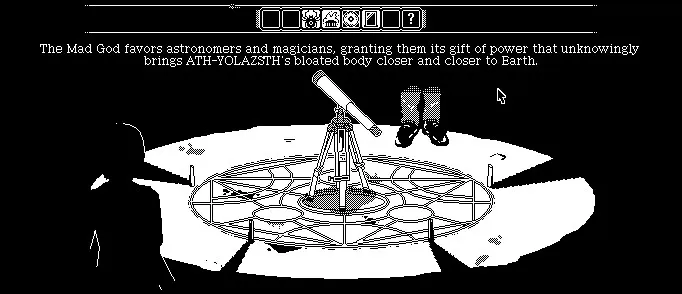
What I Dislike About WORLD OF HORROR
Only a few issues hindered my experience. Some scenarios replay on a single case, let alone a playthrough, which becomes repetitive. Some scenarios have multiple solutions to add variety or require perks to access new options, but that’s not always true. This issue makes the randomization taxing at times.
This next issue is likely a bug or an oversight. After losing my reason (sanity), I found myself still able to investigate despite the game claiming that means death. An unrelated event finished me off, but I can’t help but assume this is a bug.

Final Thoughts
WORLD OF HORROR has its quirks but earns massive replay value and surprising depth. It’s a unique and ambitious indie title worth the price. If Junji Ito’s style or cosmic horror is your particular brand of horror, WORLD OF HORROR delivers an experience you’ll likely enjoy. Though this combination synergizes well, few games combine these elements successfully.
Gaming
🎮 Eldritch Automata: Exclusive GenCon 2024 Reveal with Nick Francia!
Step into the mind-bending world of Eldritch Automata as we sit down with Game Designer Nick Francia at GenCon 2024!
Uncover the secrets behind this Lovecraftian mecha-masterpiece and get a glimpse of what’s to come.
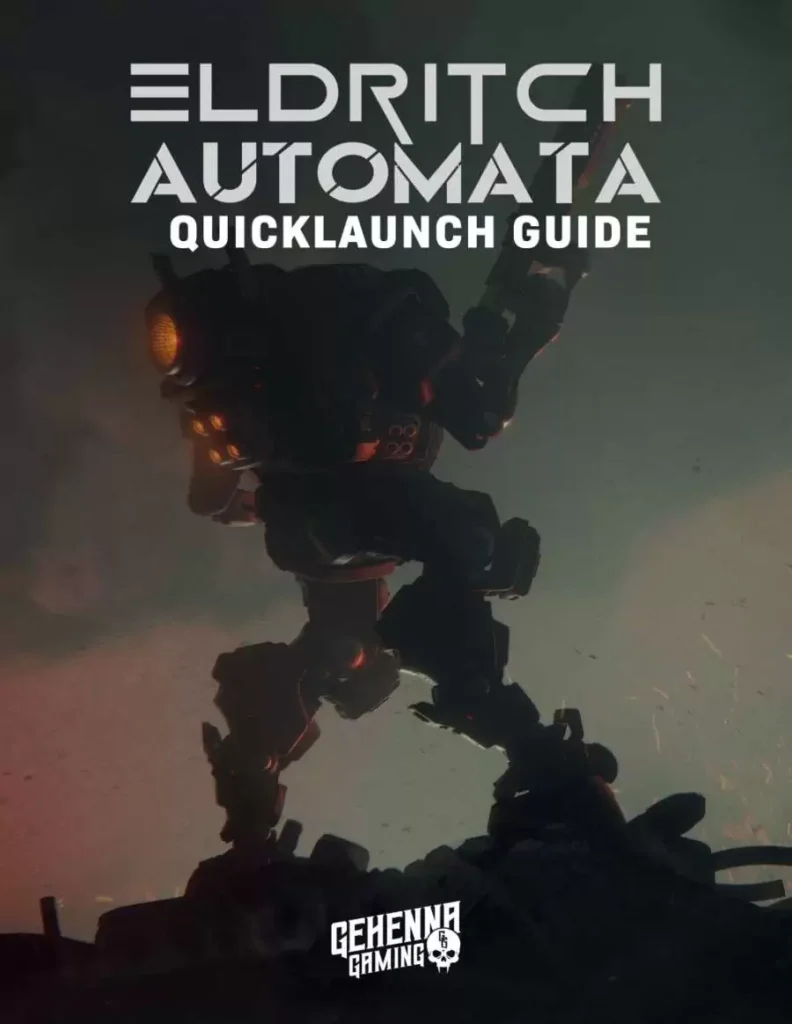
In this exclusive interview, Nick Francia shares:
• The intricate game development process • Inspirations behind the eerie Lovecraftian elements
• Unique mecha-infused gameplay mechanics Calling all Lovecraft fans! Dive into a world where eldritch horrors meet steam-powered marvels.
Eldritch Automata promises an unforgettable gaming experience that will keep you on the edge of your seat.
👉 Ready to embrace the madness? Check out our playable demo at a con near you! #EldritchAutomata #GenCon2024 #LovecraftianGaming #IndieGameDev
Gaming
🎬🎃 House of 1000 Corpses and Halloween II–GAMES!! 🎃🎬 Trick or Treat Studios
Prepare for a spine-chilling experience as Jim Phoenix delves into the shadows with Trick or Treat Studios at GenCon 2024!
In this exclusive interview, we uncover the terrifying secrets behind their latest bone-chilling creations: “House of 1000 Corpses” and “Halloween II” board games.

These games aren’t just about rolling dice – they’re about immersing yourself in the blood-curdling atmosphere of beloved horror films. With unique survival (and kill!) horror mechanics and cooperative gameplay, you’ll feel the terror coursing through your veins with every move!
But wait, there’s more! With the Kickstarter to House of 1000 Corpses shipping soon, we have an in-depth review coming up for that game, Halloween II–AND…Chucky. BOOMMM!!!


